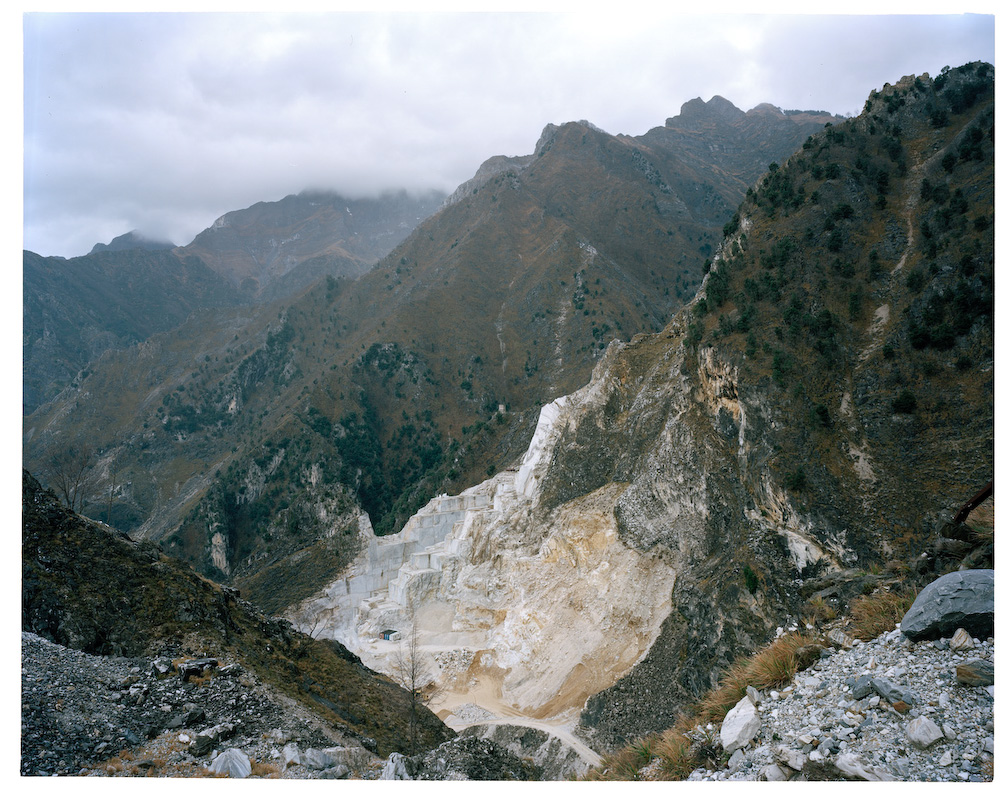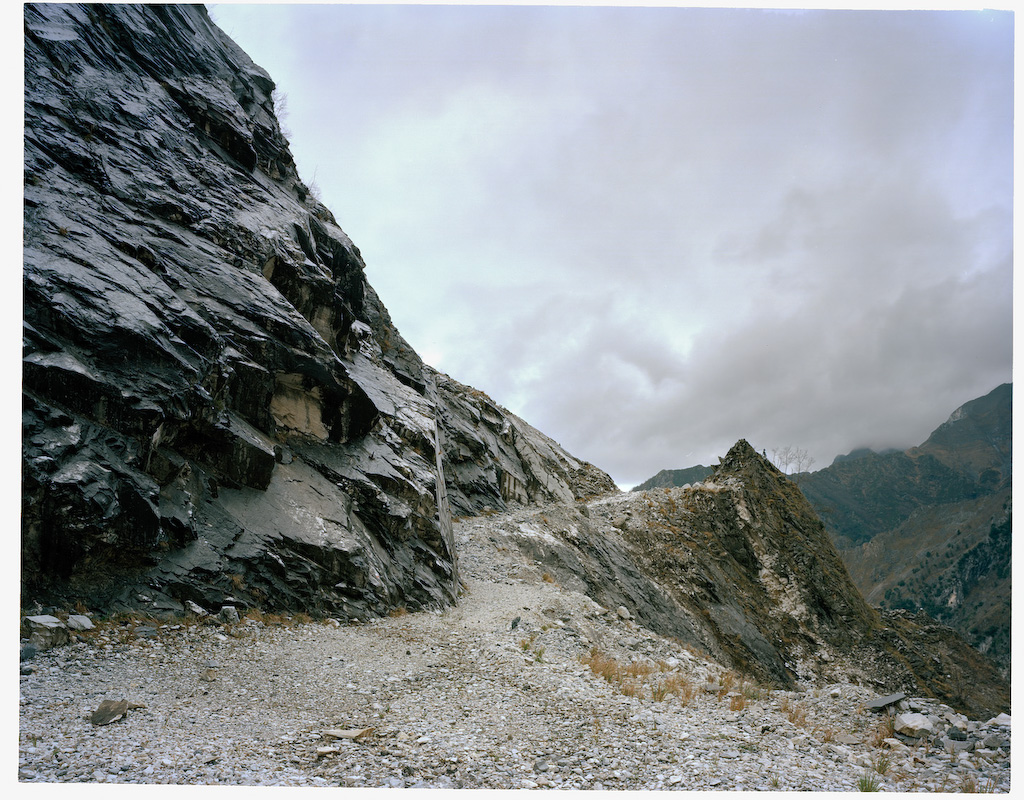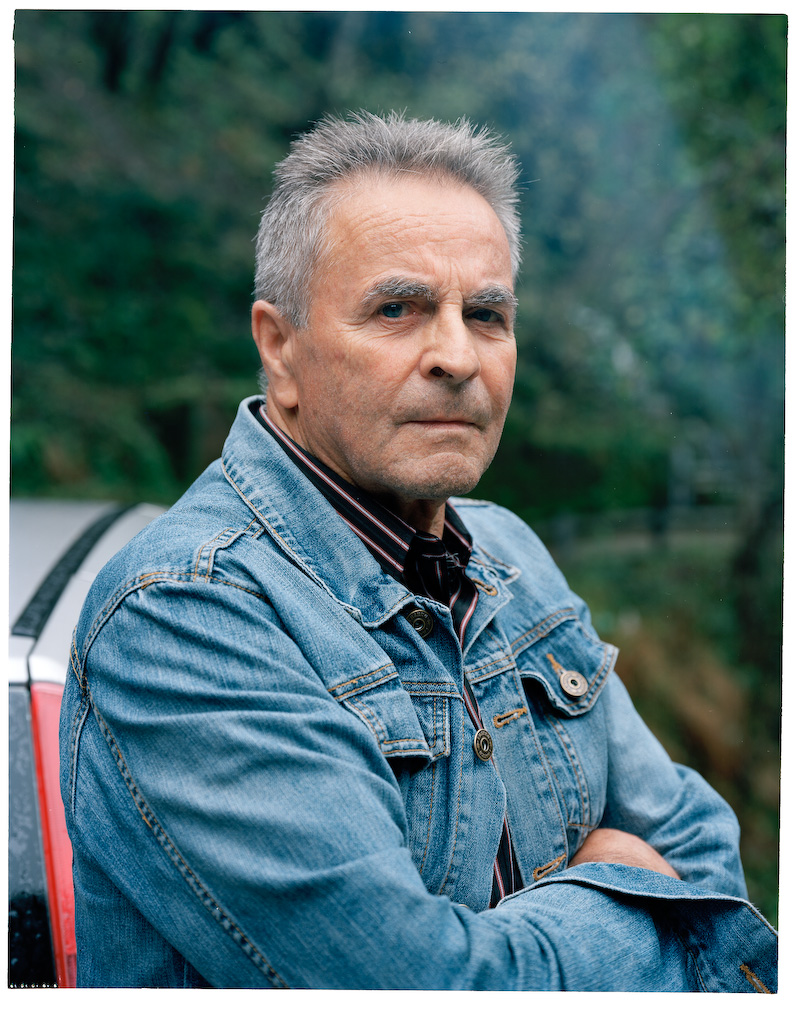An Empty Valley
Not far from the iconic city of Carrara, in the heart of the Apuan Alps,
and uncommonly for Italian expectations in this field, the history of this valley and its force break down any stereotypes about the world of marble, about quarriers and those who live there. This history merges images and imagination and results in sometimes bitter yet never banal narration, which provides an alternative, new, discouraging point of view. The rays of sunshine barely reach out to here, let alone the first pages of magazines and the flashes of photographers. Here, all voids are filled. Filled with stories about courage - that of an abandoned valley and of those who still live here, among all its wounds, contradictions and natural limits. On one side this tough nature hardly allows space for man-made constructions, yet on the other side it lets quarriers reach its very heart with their apparently unnatural lengthwise cuts, which in fact follow the geological patterns of marble layers. The antagonist here, if there is one, is history, which is always such a severe teacher: think of the industrial revolution, whose - mainly negative - effects have deeply affected the valley, and think of the massacre of about a hundred people. This is why it is of little importance that this place is barely reached by the rays of sunshine, because here I could actually arrive. And I came back. After all, here one could well imagine to be able to look at the sea from the 'Dolomites' or to walk on the austere lunar soil. One may also find a shepherd writing poetry, or a quarrier with a university degree; and even meet a hunter who prefers using his legs for trekking to using his rifle for killing, or a sculptor considering his solitude an opportunity.
Non lontano dai blasoni di Carrara nel cuore delle Alpi Apuane e dissimile dalle solite contraddizioni italiane, la storia di questa valle e' capace d'imporsi con una forza tale da abbattere qualsiasi stereotipo legato al mondo del marmo, dei cavatori e di chi la vive. Fondendo immagine ed immaginario in un racconto, a volte amaro ma mai scontato, che offre un punto di vista alternativo, inedito o disarmante. Qui arrivano a stento i raggi del sole, figuriamoci le prime pagine delle riviste o i flash dei fotografi. Perche' a Forno, non ci arrivi per caso; o perlomeno puoi arrivarci per caso, ma per caso non decidi di tornarci. Qui non esiste vuoto che non sia pieno. Pieno di storie di coraggio. Il coraggio di una valle abbandonata si, ma a chi la abita, con tutte le sue ferite, le contraddizioni e i limiti naturali. E se da un lato la natura, cosi' dura, lascia a fatica spazio alle costruzioni dell'uomo; dall'altro permette che i cavatori stessi le arrivino direttamente al cuore, con tagli longitudinali che, in maniera apparentemente innaturale, assecondano, invece, la disposizione geologica dei filoni di marmo. Perche', qui, se c'e' un'antagonista quella e' la storia, sempre eccessivamente severa nell'impartire le sue lezioni: una rivoluzione industriale, di cui la valle ha subito gli effetti per lo piu' negativi, ed un eccidio, costato la morte di un centinaio di persone. E allora poco importa se a Forno arrivano a stento i raggi del sole, perche' io ci sono arrivato. E ci sono tornato. Perche', in fondo, a Forno non e', poi, cosi' impossibile pensare di poter guardare il mare dalle 'Dolomiti' o immaginare di camminare sull'austero terreno lunare. Non e' cosi' assurdo incontrare un pastore che scrive poesie o un cavatore laureato. E non e' nemmeno cosi' tanto improbabile incrociare un cacciatore che preferisce usare le gambe per fare trekking, piuttosto che il fucile per uccidere o uno scultore che della solitudine ha fatto un'opportunita'.
The exhibition has been realised with the support of:

www.gallonicostruzioni.it































